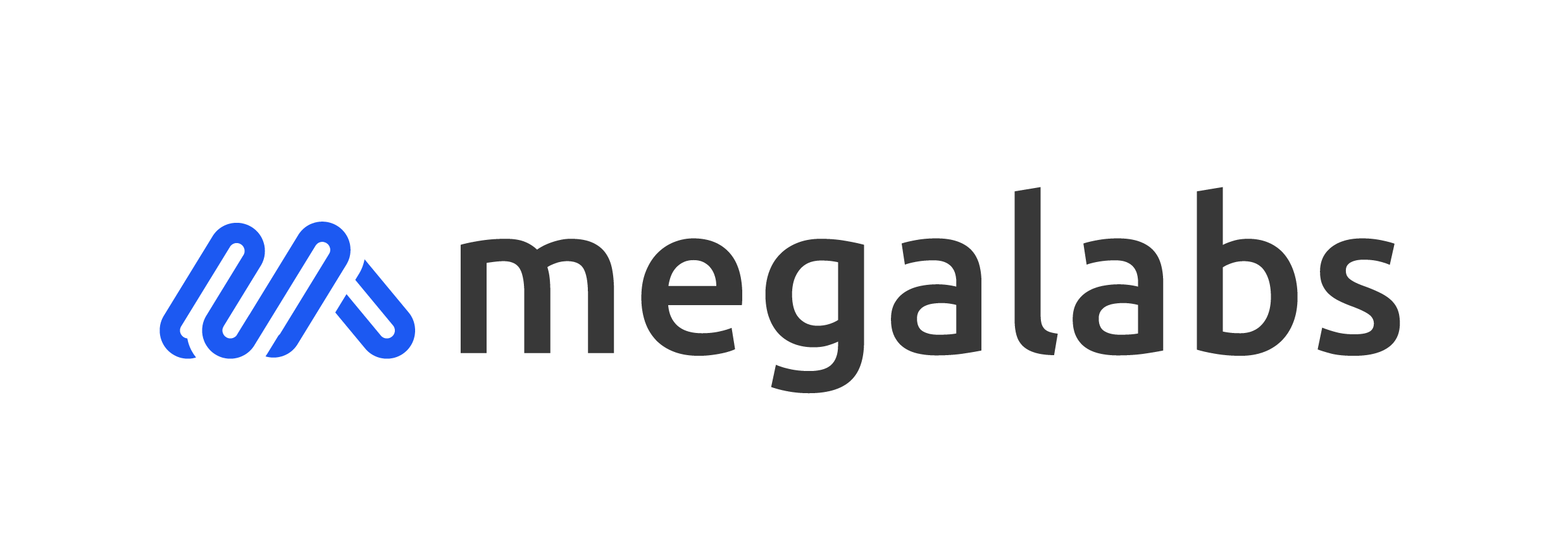Artificial Intelligence in business is fundamentally changing a wide range of industries. The increasing use of AI in retail industry is evolving the field. It’s obvious that the future of retail will be shaped by technological advancement. In this article, we’ll discuss what problems in retail industry can be solved with AI.
By 2022, the industry is anticipated to spend $7.3 billion annually on artificial intelligence. The North American AI in retail market is expected to increase from its present market worth of over $1 billion to over $10 billion by 2027, according to a study from market research firm Graphical Research.
Retailers who want to stay ahead of the competition are turning more and more to artificial intelligence to help them understand the millions of data points available and transform them into insightful information that will speed up and enhance the effectiveness of their business decisions. By 2023, 325,000 retailers are expected to use AI and machine learning in some capacity.
At the AI and Retail conference, Capgemini conducted a survey that found that the retail sector could save up to 340 billion dollars annually by using technology.
Uses of AI in retail
What problems in retail industry can be solved with AI? Artificial intelligence can solve retail challenges like improving the customer experience, enhancing the supply chain, and lowering costs.
Data, automation, and machine learning algorithms are used in retail in order to provide customers with personalized shopping experiences.
In a multichannel environment that includes both physical and online stores, AI takes care of the customer experience.
AI-driven chatbots in an online format, such as a website, provide customers with personalized recommendations or charge them based on past behavior and other relevant information.
AI is used in physical detail stores to make use of data from various sources, primarily collected by sensors analyzing customer interactions.
How AI can solve problems in the retail industry
Artificial intelligence can help retailers with the following:
- Collecting and converting massive amounts of raw data into useful information that can be used for action.
- Audience-adapting electronic shelf labels
- Customer traffic sensors that monitor both offline and online activity
- Automated personal assistant
- Demand forecasting and merchandise planning
- Automated inventory management
Now, let’s examine some use cases for artificial intelligence in the world of retail.
Cashier-free checkouts
The automation of physical stores with AI solutions will eventually result in no queues, reducing human employee involvement and, as a result, cost savings. When done correctly, the situation creates a win-win situation. Customers no longer have to waste time queuing or scanning their items, and retailers can reduce their staffing costs.
Customers can enter the store, choose what they want, pay, and leave without having to wait in line or deal with a shop assistant.
There is a lot of innovation in the space, from smart carts to apps to camera surveillance.
To make your shop smart, you’ll need to do a few things. Hundreds, if not thousands, of cameras, internet of things sensors, and a computer vision system are required. This enables retailers to detect and understand customer interactions, track product movement, and automatically determine the prices to charge.
A number of companies are attempting to make this the new norm.
Caper AI is a company that creates smart carts and cashier-less checkout technology. With its computer vision enabled basket cameras, the cart instantly detects items. No barcode scanning is required; shoppers simply toss items into the cart. When an item is added to the cart, it is automatically added to the digital shopping list.
Amazongo could be another example in this case. Checkout-free stores have already been introduced by Amazon AI. When you take something from the shelf or put it back, Amazon’s “Just walk out shopping technology” works smoothly. These cashier-less stores use sensor fusion and deep learning algorithms to determine what items a shopper has and how much they are worth. Finally, when you leave the store with products, your Amazon account will be charged.
Inventory management
The pandemic has demonstrated the importance of inventory management.
Participants in a supply chain include suppliers, logistics companies, manufacturers, and distributors, in addition to retailers. Although some supply chain issues are beyond retailers’ control, AI can play a significant role in optimizing them.
AI in the retail supply chain lowers costs for third-party partners and their customers, resulting in faster deliveries with greater precision and safety.
Because AI understands multiple variables in the value chain, it can help reduce risks and scenarios of unsold and out-of-stock inventory. Estimating the demand for a specific item based on factors such as previous sales, geographic location, weather, trends, promotion, and so on is possible.
Improving product placement
Retailers also invest in technologies that benefit both customers and employees in stores and warehouses.
They can deploy object detection software to track inventory on shelves and report where in the store needs replenishment by leveraging the power of computer vision systems.
Using image recognition and object detection techniques, AI can help take the guesswork out of product placement, allowing retailers to make the necessary changes to improve store layout, which means more sales for the retailer.
Another significant advantage of this technology is its ability to quickly detect empty shelves, which has long been a source of frustration for both retailers and customers.
Retailers can instantly alert staff when an empty shelf is discovered by using fixed cameras and object detection.
Tracks an ai planogram bot is used to audit planograms, allowing retailers to optimize in-store displays. They can do it overnight while the store is closed, and the information will be ready for staff when they arrive in the morning.
It can also improve store layout, speed up a/b testing, generate heat maps to show where customers flock in the store, and forecast how long a product will remain on the shelf before being sold.
Detecting suspicious activity
Shoplifting is still a major issue all over the world. In the United States alone, this costs retailers billions of dollars each year. Most businesses use CCTV for security, but AI can go a step further.
AI enables retailers to detect suspicious behavior in-store, and if a crime occurs, it can send an alert to a member of staff to review the cameras.
They can detect unusual behavior in stores by using activity recognition, object tracking, and pose estimation.
Vac, a Tokyo-based company, has developed such software. According to them, tests and local convenience stores show that their system can reduce shoplifting losses by 77%. The system uses storage surveillance cameras and analyzes over 100 aspects of shopper behavior, including hand movements, facial expressions to detect suspicious behavior.
Customer experience
Retailers are investigating how AI can help them better understand customer behaviour in-store, allowing them to better serve their customers.
By analyzing waiting times and how long a person stares at an item, retailers can gain a better understanding of what can increase conversion and result in more purchases.
AI can also be used to customize the shopping experience in-store. According to Accenture, 83 percent of customers are willing to share their data in exchange for a more personalized experience.
AI chatbots are another AI solution for assisting customers. Chatbots provide a higher level of customer service, improve search notification elements, and suggest similar products.
AI chat bots are already being used or will be used by two-thirds of the world’s brands in the next couple of years.
Dynamic pricing
The use of AI in retail stores could assist businesses in changing product prices and visualizing the likely outcome of dynamic pricing strategies.
Data is the key here; systems collect information about other products, sales figures, and promotional activities.
Companies can present the best offers tailored to each customer’s needs and capabilities, as well as gain new customers, using dynamic pricing.
Visual search
Customers can use visual search to upload images and find similar products based on parameters such as colors, shapes, and patterns.
For example, at a runway show in 2017, Tommy Hilfiger debuted an app that allowed attendees to take photos of the merchandise being modeled and upload them to a visual search engine.
Visual search works brilliantly for the fashion industry, where shoppers want to catch on to the rapidly changing trends of products.
Voice search
The barrier of written language is broken down by voice search. Customers can now simply ask Alexa for the product they want and the status of its delivery without having to type anything.
In fact, one-fourth of people worldwide use mobile voice search, and half prefer it to mobile apps and websites for convenience.
Retailers such as Walmart, Tesco, and Costco use Google or Amazon AI technology to enable customers to conduct a quick voice search.
Virtual fitting rooms
In the last decade, the dynamics of trial room fitting have changed dramatically. Retailers have recognized that this is where major purchasing decisions are made.
Customers can save time and find the perfect output by using virtual fitting rooms instead of going through multiple options.
A virtual fitting kiosk from a Canadian company called me LT, for example, can scan a person in 20 seconds and measure up to 200 000 points on your body in that time.
Examples of AI in Retail
Now, let’s look at some examples in the industry.
Intel
Intel Technologies enables a variety of exciting and emerging retail analytics and AI use cases.
They created AI-powered intelligent display ads to better understand customer engagement and interest. The ads’ content can be tailored to the audience in real time.
Intel also created electronic smart shelves that emit an instant signal about product availability, allowing items to be quickly refilled.
Touchless kiosks that recognize speech and gestures, as well as service robots that interact with customers, are examples of new retail solutions. These solutions help shopper experiences smoothen with minimal contact.
McDonald’s
McDonald’s wants to transform the drive-through into a technological experience.
They acquired Dynamic Yield, an Israeli company focused on personalization and decision logic.
McDonald’s will use artificial intelligence to automate its drive-through menus as a result of this acquisition.
With automated systems that can make real-time menu recommendations based on consumer trends, ordering habits, and even weather conditions, this AI integration is set to take personalization to the next level.
H&M
H&M predicts trends using artificial intelligence.
To predict and analyze Trends, H&M employs over 200 data scientists.
H&M’s AI algorithms collect fashion trend data by collecting information from search engines and blogs around the world.
They make decisions based on this information about how much they buy, when they buy, and where it should be placed in its stores, among other things.
CALI burger
CALI Burger has self-service kiosks that use face recognition software to identify returning customers. Once recognized, it provides them with access to their order history and meal recommendations. Their customers also can pay for their order by just looking at a screen.
The company began testing the technology at the end of 2017 and intends to roll it out globally. By using AI, they aim to reduce their labor costs and make the restaurant operate more efficiently.
Conclusion
Throughout the article, we talked about what kind of problems in retail industry can be solved with AI. To summarize, AI is the future of retail. By incorporating AI capabilities into stores, retailers can transform their data into powerful new insights. Customers benefit from streamlined purchasing, a highly personalized experience, and an improved store layout. Retailers benefit from more accurate forecasts, inventory efficiencies, and a smarter business overall.


